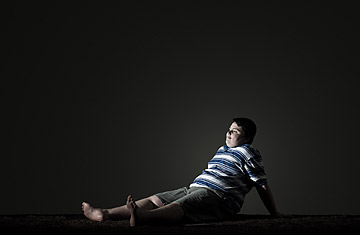
Michelle Obama isn't the only person alarmed by the epidemic of childhood obesity. So is weight-control specialist Dr. Howard Shapiro. "Kids at the age of 12 are getting adult-onset diabetes," says Shapiro. "One-third of everybody born in 2005 will have some form of diabetes." Shapiro's new book, Eat & Beat Diabetes with Picture Perfect Weight Loss: The Visual Program to Prevent and Control Diabetes, written with chef Franklin Becker, is an action plan for both adults and children. TIME senior reporter Andrea Sachs met Dr. Shapiro over a healthy, veggie-laden lunch in Manhattan, where he has practiced medicine for 30 years.
Is the steep increase of diabetes in children solely a matter of obesity or does it have to do with a lack of exercise as well?
It's the whole package. Kids are obese today because there is no phys ed in school, both parents are working, nobody is cooking a dinner at home, and [what they are eating] is fast food. Fast food is high caloric, not healthy, and portions are gigantic. Kids don't exercise. Kids sit on the computer all day, and they don't do anything.
How does a parent know if their child has diabetes? What should they be looking for?
If your child is just a little bit overweight, then I wouldn't be concerned about it, but if your child is obese or significantly overweight, a blood test will tell you. It's not so much that a parent should only [be concerned] because of diabetes — any child that's overweight runs the risk of other things. Some of these children now in their teens have high cholesterol, and they are going to get strokes in their 20s and 30s, where [older generations] get them in our 50s and 60s because we never had high cholesterol as kids. If a parent sees a child who's overweight, there are things that they can do.
Like what?
If you want to help your child, set an example in your house. Put healthy food out. Put out vegetables. If they don't eat the vegetables on the plate, put it out the next day as a soup. Don't scold your children or push them, just keep bringing it out. Put it out in an omelet for breakfast. Put fruit out with whole grain French toast. Instead of saying, "eat fruit," you put it out on French toast with light syrup. There's different ways of bringing back foods over and over and over again until your child starts to eat them. Set the example by not keeping cakes and cookies and all these things around the house.
What about parents who would say, I can't follow my child around all day long?
They're right — they can't, and they don't have to, and they will never be able to follow their child all day long. If they do, the kid is going to resent it and rebel and be fat just to antagonize the parent. They should just set the example at home.
If your kid has a sweet tooth, what can you do?
There are some foods that your child can have. We have one demonstration in the book where there's a 4-oz chocolate chip cookie, and that's 640 calories and 40 grams of fat. Next to it we have a scoop of frozen yogurt with a cone, that's a 140 calories. You just saved 500 calories. There's a yogurt that is 240 calories and has 40 grams of sugar, which equals 10 teaspoons of sugar. Next to it we've made a milkshake called "Mauve Madness," which is basically three-quarters of a cup of blueberries, three-quarters of a cup of soymilk, a teaspoon of vanilla, and some Splenda and some ice cubes. So it's a milkshake that's 120 calories, it has fiber; it doesn't have any sugar. We're not just saying to kids, "eat fruit," we are giving them something that looks like a dessert. There are low calorie popsicles that kids can have instead of having a scoop of ice cream. They can have 17 popsicles [for the same number of calories].
Once a child has been diagnosed with diabetes, is it irreversible or can the family help?
If a child has Type 1 diabetes, that is juvenile diabetes and that is not what we are talking about here. If they have that, that means their pancreas isn't working, therefore they are not producing insulin. They have to give themselves injections the rest of their life or they have to be put on a pump that gives them the injections. Type 2 diabetes is what we are talking about, the number six killer of Americans. If you are overweight and you have an elevated blood sugar because your insulin cannot deal with all the carbohydrates and sugar that you have in your body, then you can control it. Basically, you can cure it by losing the weight.
To give you one example, I had a young patient who was sent to me by an endocrinologist years ago. The endocrinologist had him on oral medication and told him that he was going to have to go on injections if he didn't lose the weight. He came to me, but did not lose any weight for two and a half months. He went back to the endocrinologist, who said, "Okay, it's time for insulin." The patient said to him, "Give me another chance." He came back to me, and lost 45 pounds. Not only did he not need the insulin, he didn't need his oral medication anymore. The bottom line is that with Type 2 adult diabetes, you can cure it.
